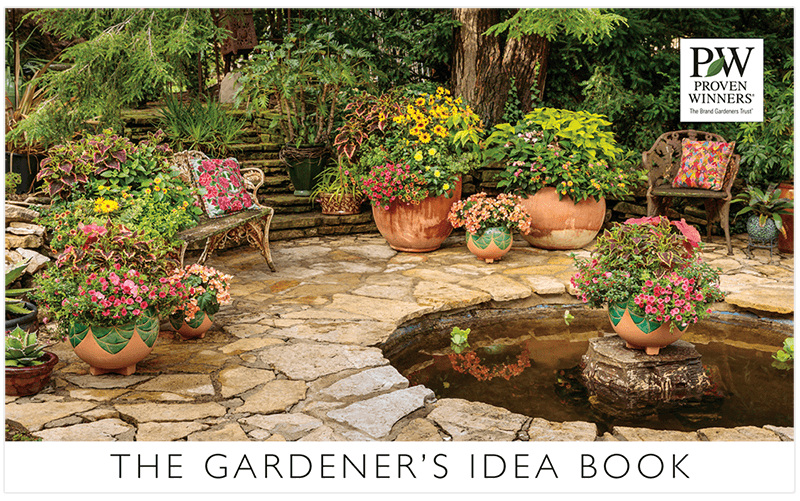Anthurium - The Ultimate Growing Guide from Proven Winners®
Add exotic appeal to indoor spaces with this stunning houseplant
 Check here to see if your Local Garden Center or The Home Depot® is carrying leafjoy®.
Check here to see if your Local Garden Center or The Home Depot® is carrying leafjoy®.
Anthurium is a tropical plant native to Central America, South America, and parts of the Caribbean. Also known as flamingo flowers for their flamboyant coloring, they became popular as indoor plants for the exotic flower spathes that resemble peace lily. Some anthurium types are grown solely for the attractive heart-shaped leaves that occur in different colors, shapes and patterns.
Most anthurium species are epiphytes, attaching their roots to tree trunks or branches to extract water and nutrients. When provided with the proper care and growing conditions, these plants will beautify indoor spaces for many years. Here’s how to grow and use them in your home or office.
ANTHURIUM CARE & PLANTING
How to plant: Anthuriums will need repotting every 2 to 3 years. Spring or summer is the best time when plants are actively growing. Remove the plant from its pot to inspect the roots. If plants are root bound, it’s time to repot.
- Use a new pot that is 1 to 2 inches larger in diameter and slightly deeper than the previous pot.
- Check roots for any signs of rot or other damage.
- Cut out any damaged portions as needed.
- Inspect plants for pest or disease problems.
- If the new pot has been previously used, clean and sterilize it before reusing.
- Make sure there are adequate drainage holes to allow excess water to drain out the bottom.
- Place fresh bark or soil medium in the bottom of the pot.
- Place the plant at the same level it was in the previous container.
- Add soil medium up to the base of the plant stem.
- Press down lightly to remove air pockets and firm the soil.
- Water slowly until liquid comes out of bottom of the pot.
Light requirements: Anthuriums prefer medium to bright indirect light from an east- or west-facing window. Avoid direct sunlight, which can cause leaf scald. Too little light may cause failure of plants to thrive, and colors to fade.
Find the best indoor plants that thrive in dim spaces.
Temperature: Anthurium is native to warm tropical regions, preferring temperatures between 65 to 85 degrees F. Temperatures below 60 degrees F may damage foliage and flowers. Keep plants away from drafts, cooling and heating vents.
Soil: Because most species are epiphytes, anthurium soil should consist of bark or other coarse potting material to provide adequate drainage and air circulation around the roots. Use a potting mix especially formulated for orchids, or all-purpose potting soil with added bark, peat moss or perlite to improve drainage.
Watering: Water once the top 2 inches of soil becomes dry, using a bottom-up method. Lower the pot into a bowl of slightly warm to room-temperature water for 15 to 20 minutes. Avoid getting water on the foliage, as it can be problematic.
Fertilizing: During the growing season in spring and summer, fertilize monthly at half strength with an all-purpose liquid plant fertilizer. Anthurium fertilizer for flowering types should be higher in phosphorus to promote blooms. Cease fertilizing in fall and winter when plant growth slows down.
Pruning: For flowering types, remove spent blooms to encourage new flowers. Cut off leaves that turn brown or yellow, and any dead or damaged growth as it appears. When pruning, use gloves to prevent skin irritation from the sap.
TRY THESE PROVEN WINNERS® LEAFJOY™ VARIETIES
 DocBlock® Michelle® (Anthurium hybrid) features velvety heart-shaped leaves with distinct white and pink veining. Leaves emerge bright purple with red veins, maturing to a rich dark-green color. Leaf undersides transition from lavender to pale green over time for additional contrast. Use as an eye-catching focal point on an end table or bookcase. |
 Arching Amour™ Alexandrite is Right™ velvet leaf anthurium (Anthurium hybrid) produces heart-shaped ruby-red leaves that shift to emerald green. The coloring and intricate silvery veining are reminiscent of an Alexandrite gemstone, with a smooth texture of polished stone. Display near a window on a table or desktop. |
 Arching Amour™ Heart’s Desire™ velvet leaf anthurium (Anthurium hybrid) has soft heart-shaped leaves that emerge in tones of blush red, turning green as they age. The wide pale-cream veins of this variegated anthurium are reminiscent of a rib cage holding a heart. Display on a bedroom dresser or end table for a soothing bedside touch. |
 Arching Amour™ Heart’s Afire™ velvet leaf anthurium (Anthurium hybrid) features velveteen heart-shaped foliage with delicate, creamy veining. New leaves have fiery bronze-red overtones, fading to deep green as they age. Place in a hanger in a kitchen or bathroom where air humidity is higher. |
FREQUENTLY ASKED QUESTIONS
Is anthurium a good indoor plant?
When given the right growing conditions of medium light, warm temperatures, and high humidity, anthurium plants thrive and are easy to care for, making them a good indoor plant to grow.
Where is the best place to put an anthurium?
Place them near a bright window, in a warm spot that is free of drafts.
Is it okay to touch anthurium?
These plants contain calcium oxalate crystals, which can cause skin irritation. Avoid touching your face, particularly the eyes and mouth. Wear gloves and wash hands thoroughly after handling these plants. Keep out of reach of curious pets and children.
How long do potted anthuriums last?
With proper care, they can last for many years. Plants will need repotting every 2 to 3 years to refresh soil medium.
Do all anthuriums flower?
Anthurium plants are best known for the decorative flower spathes that resemble peace lily, though many varieties are grown for the decorative foliage.
Do anthuriums like to be misted?
Anthurium is a native to warm, humid tropical regions, preferring humidity of 60% or higher, which is more than the average indoor environment. To boost humidity, lightly mist plant foliage, or better yet use a room humidifier. Plants can also be placed on a tray filled with pebbles and water.
How often should I water my anthurium?
During the active growing season in spring and summer, water about once a week when the soil surface is dry to the touch. Allow soil to dry out in between waterings, but don’t allow plants to dry out completely. Avoid overwatering to prevent root rot. Reduce watering in fall and winter when plant growth slows down.
HOW TO USE ANTHURIUM IN YOUR HOME OR OFFICE
Here are some ideas on how to use anthurium plants in your indoor spaces:
- Display them in a bathroom or kitchen to take advantage of the higher humidity levels.
- Create an eclectic display on a mantelpiece with anthurium plants, statuary, vases or other decorative accessories.
- Plant anthurium in a colorful decorative pot that complements your home decor. Place on a coffee table or end table for a coordinated look.
- Group alongside other houseplants with similar growing needs on a sideboard or table, which will help reduce maintenance and boost humidity levels.
- Place an anthurium plant in a brightly colored container and display on an office desk to liven up a workspace.
- Use a plant hanger to display where space is at a premium.
- Adorn a bookshelf with anthurium plants and decorative accessories for a compelling display.
- Add a sophisticated touch to a bedroom dresser with anthurium plants.
Find the best dorm room plants for busy college students.
ANTHURIUM COMPANIONS
Display anthurium alongside other plants with similar growing needs of bright indirect light, regular moisture, and high humidity. Try some of these anthurium companions:
- Beautifall® N’Joy pothos
- Igneous™ Timeless Tides™ Chinese evergreen
- Prismacolor™ Lemon Lime philodendron
- Living Lace® Hurricane bird’s nest fern
- Color Full® Beauty Star pinstripe calathea
- Network News™ Media™ nerve plant
Want to learn more?
Best Indoor Plants for Beginners




